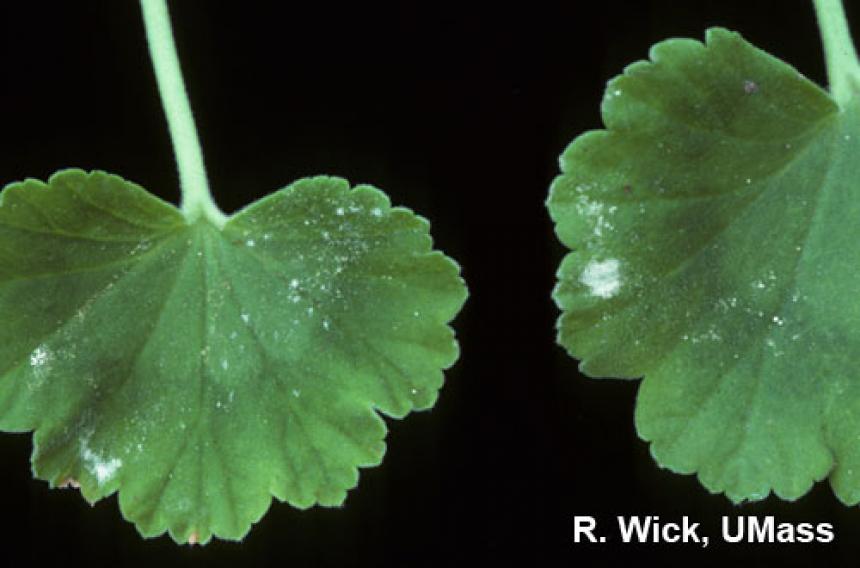Powdery mildews are one of the most common diseases of ornamental plants; many nursery,flower, and woody plants are susceptible. Greenhouse crops prone to infection include African violet, Begonia, Dahlia, gerbera daisy, Hydrangea, roses, Verbena, Kalanchoe, and poinsettia. Herbaceous perennials particularly susceptible to Powdery mildewinclude Aster, Centaurea, Coreopsis,Delphinium, Monarda, Phlox, Rudebeckia, and Sedum. The disease is easily recognizable as a white to gray powdery growth on leaves and sometimes stems and flowers. Powdery mildew may have little or no affect on the plant (other than aesthetic) or it may cause infected leaves to distort, discolor, wither,and defoliate prematurely. Most Powdery mildews have evolved to avoid killing their hosts because they can only survive in living plant tissue. Symptoms and their severity depend upon the cultivar or species of host plant, the powdery mildew species, environmental conditions, and the age of plant tissue when it first became infected. Powdery mildew diseases are caused by species of fungi such as Erisyphe, Leveillula, Microsphaera, Podosphaera, Odium, and Sphaerotheca, although each powdery mildew is specialized to infect only hosts in one genus or one family. Infection does not spread to species of plants in other plant families. Powdery mildew fungi behave somewhat differently from other foliar plant pathogens in that they do not need free water for disease development. Monitor crops on a regular basis for Powdery mildew diseases. Epidemics that seem to develop overnight are often the result of undetected low level infections that have spread spores throughout the greenhouse. Rogue infected plants or prune out diseased tissue. Perform this operation when plants are wet or immediately place diseased material into a plastic bag to prevent spores from spreading. The use of resistant cultivars or species is a good management tactic. Avoid overcrowding of plants and provide good air movement. Keep relative humidity levels low in the greenhouse by a combination of heating and venting in late afternoon and early morning. Clean greenhouse thoroughly between crops, eliminating all weed hosts and volunteer plants. This disease is most prevalent under conditions of high humidity. Powdery mildew fungi infect only the upper layer of plant cells; chemical eradication of infection is possible. Compass,Cygnus, FirstStep, Pipron, Rubigan, or Zyban are registered for use on ornamentals. Cleary's 3336, Fungo Flo,Spectro, and Terraguard have broad crop clearance and are also effective against powdery mildew. Apply according to label instructions. To avoid fungicide resistance, rotate with fungicides from different classes (active ingredient).
Fact Sheet: Powdery Mildew Diseases of Ornamental Plants
